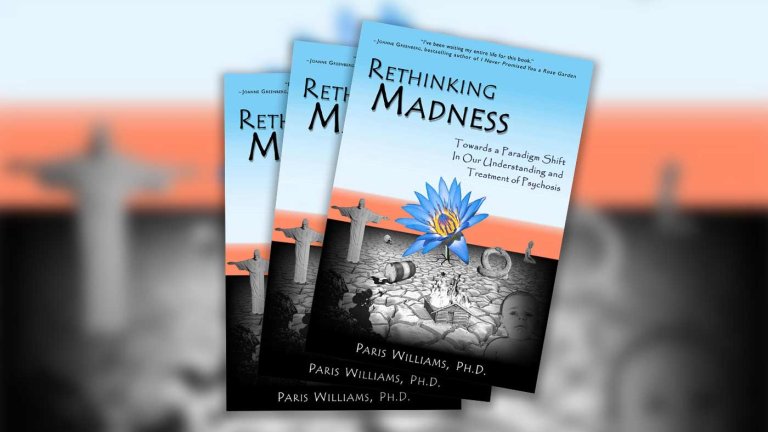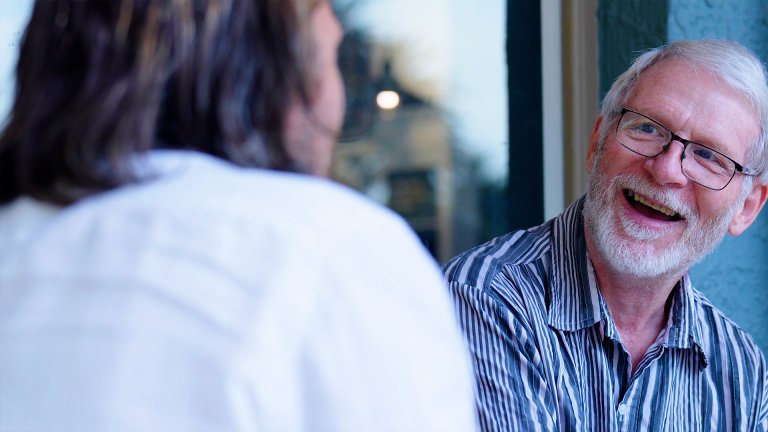Lockdown Life 1: The ABCs of CBT
There are various factors which are beyond our control during this COVID-19 pandemic and the appended lockdown, but what we do have a large degree of control over is how we think. This brings us quite naturally to the therapeutic modality with the greatest emphasis on understanding and changing our thought processes: Cognitive Behavioural Therapy. If you are struggling at present, or in general, please bear with us as we cover various useful CBT principles and techniques in this series of articles.
Cognitive Behaviour (or Behavioural) Therapy, commonly abbreviated to CBT, is the therapeutic method with the largest body of scientific literature testifying to its effectiveness. While many therapeutic systems rely upon the constant involvement of a third party trained in the discipline, CBT is designed so that the client eventually becomes their own therapist. For this reason, even a wade through the shallow edges of the theory can change the way you think, feel and behave.
The shell of CBT, the skeleton to which the finer fleshy details cling, is known as the “ABC model.” The ABC model is essentially a representation of the fact that it is our thoughts or beliefs (B) about ourselves, others and the world which determine our emotional responses(C) to certain activating events (A).
The A in the acronym stands, as stated, for activating event, which can denote either an external or internal event; that is to say, we are responding to either the world acting upon us or our mind acting upon itself in the form of a perception or inference.
The B stands for belief which refers to the three tiers of belief which underlie and define human consciousness. An example seems appropriate here: Let’s assume that someone is rude to you as you peruse the supermarket, maybe they nudge your trolley out of the way or insult you verbally. Exactly how this event (the A, the activating event) is interpreted depends upon your thoughts about that event (the B, your beliefs). The combination of these two factors creates an emotional and often behavioural consequence (the C).
If you hold the pre-existing intermediate belief that “people must respect me, therefore those who don’t are condemnable and must be punished” you are likely to respond to this kind of interaction with an inappropriate degree of anger, possibly even violence. If you hold the pre-existing belief that “people must like me, and if they don’t then I am unworthy and condemnable” then such an interaction is likely to invoke a bout of depression.
Depression and anger are classified as “dysfunctional” or “maladaptive” emotions. This isn’t because negative emotions must be avoided; negative emotions are useful indicators of changes we need to make in ourselves or the world around us. Just as physical pain urges us to confront or flee from danger, to alter or leave our environment, so too does mental pain. Emotions are communications. However, when we have irrational or otherwise inaccurate beliefs lurking under the surface of our conscious minds, we are inevitably going to draw upon those beliefs as we interpret and navigate reality. In turn, these beliefs exaggerate functional, adaptive negative emotions, such as sadness and annoyance, and morph them into dysfunctional, maladaptive negative emotions such as depression and anger. The goal of CBT is, therefore, not to suppress or ignore negative emotions but rather to make them more manageable and appropriate, to sedate them, to dull their blades. Emotions are supposed to communicate to us relatively clearly, albeit passionately, but when they are the product of distorted thoughts they tend to scream and wail hysterically instead.
To reason with your emotions, to calm them down enough to understand their message, it is necessary to first understand the basic structure of your mind, which can be thought of as a large iceberg floating in the ocean. The fully conscious mind, the active ego which navigates the world and navigates reality is represented by the part of the iceberg which protrudes out of the water. This active aspect of consciousness is aware of and capable of accessing and analysing itself (and, with practice, the parts of the mind which are hidden beneath it).
Your conscious mind is the voice you hear in your head or the concepts and energies which you observe whirling around it while you think. It is the things you choose to say to yourself and the things your mind’s eye observes directly.
The two lowest tiers of belief which are not directly or easily accessible to this conscious mind are embodied by the part of the iceberg which remains submerged and is blurred or obstructed by proverbial water; core beliefs sit at the bottom while intermediate beliefs hover above them. The other tier, the topmost level of belief embodies automatic thoughts which are best described as lingering just above the surface of the water; observable and direct but seldom noticed. Most influential and deeply engrained among these three tiers are core beliefs or axioms.
Core beliefs reside in the lowest depths of the mind and are broadly applied to life as a whole rather than specific situations. These beliefs might revolve around the world being oppressive and unfair, people being inherently malevolent and untrustworthy, or any other broad assumptions which are buried deeply enough in the mind to colour one’s entire personal experience (including the other two levels of thought).
Conversely, at the top of the pyramid of belief and the bottom of the conscious mind are automatic thoughts that, in stark contrast to core beliefs, are specific to certain situations or events. Automatic thoughts are constant and fleeting; they duck in and out of the mind swiftly, like a swimmer’s head bobbing in and out of the water. Like core and intermediate beliefs, they are involuntary, but unlike core and intermediate beliefs, they are more accessible to the active parts of the mind. Have you ever been struck by a sudden and brief bout of anxiety or depression? If you have, there is a good chance that it was the result of an automatic thought which emerged and then submerged again without you noticing, leaving behind only the frothy wake of the emotions it evoked. Because of this, it is automatic thoughts which seem most intrusive, although the content of each automatic thought comes from one's intermediate and core beliefs (core beliefs affect intermediate beliefs which effect automatic thoughts).
Sometimes, despite the layer of intermediate beliefs in between, automatic thoughts and core beliefs can be identical because the former can emerge directly from the latter. You might have the core belief that you are stupid and incompetent, which causes a constant flow of automatic thoughts saying the same thing whenever you make a mistake: “I’m so stupid,” “I can’t do anything right,” “I’m a loser.” Thoughts, like feelings, are often unreliable mediums of the truth. You’re not stupid, you just feel stupid because you developed that deeply engrained belief, a bias against yourself, during a series of harsh, possibly even traumatic life experiences. We learn what we are taught and our environment doesn’t always teach us the truth.
Intermediate beliefs, which sit cohesively between core beliefs at the bottom and automatic thoughts at the top, tend to be conditional expansions upon core beliefs, which is to say rules, attitudes or assumptions that are more situation-specific than core beliefs and less situation-specific than automatic thoughts. They often take a core belief and attach it to another proposition; your hypothetical core belief that “people are dangerous” might spawn the intermediate belief that “people are dangerous and so I must avoid them, or I will be harmed”. An automatic thought which might then emerge in response to a third party approaching you to ask for directions is “I’m under attack” resulting in anxiety (the emotional consequence) and a panicky exit (the behavioural consequence). When you see a person behave this way, when you witness a drastic overreaction to something relatively ordinary, what you are likely observing is the product of deeply engrained networks of dysfunctional, maladaptive beliefs. We all have some of these beliefs, human imperfection is timeless and unavoidable.
Perhaps another example is to better demonstrate how these different tiers of belief can collaborate and maintain one another: If you hold the core belief that the world is entirely unpredictable and unfair and the associated intermediate belief that you must, therefore, not take risks or invest effort in striving for what you want, you are likely to be pestered by automatic thoughts dissuading you from taking opportunities when they arise (Automatic thought: “There’s no point in trying”. Resulting emotions: helplessness and depression. Behavioural response: Avoidance).
“How does this information help me?”, one might be wondering. It might not, in and of itself. However, this is the first part of an ongoing series in which we will delve further into CBT theory. The first and perhaps most important aspect of CBT is “psychoeducation”, that is to say educating oneself on how the mind works and, therefore, how to get it to work more effectively and efficiently. There are hordes of resources available online (which are easy to locate via any reliable search engine with the keywords “cognitive behaviour therapy”)that can be used to supplement these articles, especially this one given its introductory nature.
As has been stated, cognitive behaviour therapy is an effective therapeutic modality which deals directly with thoughts and sorts them into three different levels; deeply-engrained core beliefs, mid-level intermediate beliefs, and surface-level automatic thoughts. These beliefs colour our emotional reactions to activating events, determining whether we experience productive negative emotions or their unhelpful, often disorienting equivalents. Simply put, by understanding and reconfiguring your internal world you can improve your quality of life by LITERALLY changing how you think and feel.
If you have read this entire article you have already shown the willingness and ability to evolve, you have placed your foot on the first upward step toward understanding and bettering yourself.
Stay the course, my friend; we’ll meet again soon and ascend this staircase together, one step at a time.






